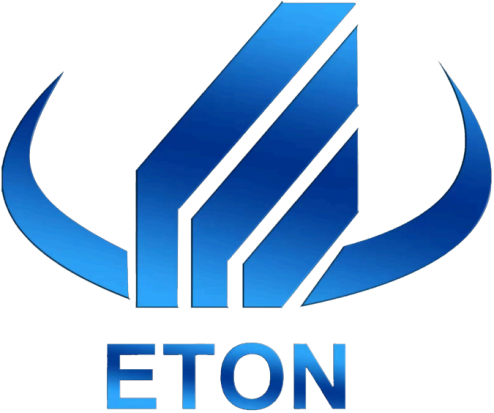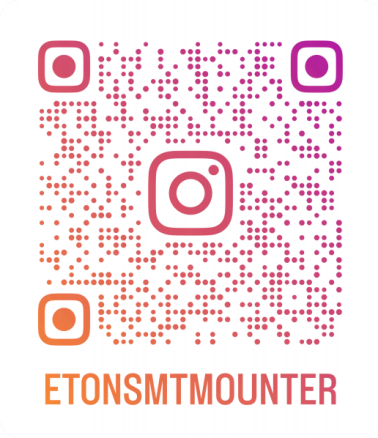LED industry trends in 2019: what you need to know
Published Time:
2021-08-03
In 2019, the growth rate of LED chip production capacity exceeded the growth rate of demand.
In 2019, the growth rate of LED chip production capacity exceeded the growth rate of demand.
Overall, in 2018, the growth rate of market demand was far less than the growth rate of production capacity, leading to price declines and companies experiencing increased production without increased revenue. In 2019, the demand side, affected by the global economic downturn and the US-China trade friction, is not optimistic; on the supply side, expansion projects continue to increase, and the problem of overcapacity will continue.
According to statistics, it is estimated that LED chip production capacity will still increase by 1.4 million pieces/month (equivalent to 2 inches) in 2019. Currently, manufacturers' inventories are already at a high level. With the release of new production capacity in 2019, chip market prices are expected to continue to fall.
The market demand for LED packaging is not optimistic.
According to LEDinside statistics, the scale of the LED packaging market in mainland China in 2018 was 69.7 billion RMB, a year-on-year increase of 6%. Starting in the second half of 2018, due to the US-China trade friction, LED lighting exports will be significantly affected, and the impact is difficult to eliminate in the short term. Therefore, market demand in 2019 is still not optimistic, and domestic market demand in mainland China will be the main driving force for growth, including automotive LEDs, high-end commercial lighting, high-end backlighting, and display markets.
From the product category perspective, lighting is still the major application of LEDs, accounting for 49% in 2018. Traditional display screens and traditional backlighting markets still account for a large proportion, but future growth is very limited. New Mini LED backlighting or Mini RGB is expected to become a new growth driver in the future, but the current market acceptance is still relatively low. The automotive lighting market is the most noteworthy market in the next two to three years. The rise of domestic automobiles and new energy vehicles will form a new supply system, and the previously relatively closed automotive supply chain is expected to be broken. This is an opportunity for new entrants to the Taiwanese or mainland Chinese markets.
From the supply side, mainland Chinese manufacturers are still the main suppliers, with a market share of 70% in 2018, but the proportion has not increased significantly. The main reason is that high-end automotive, high-end backlighting, and lighting markets are still dominated by international manufacturers. International manufacturers' revenue in the mainland Chinese market in 2018 still maintained a 4% growth. The revenue of mainland Chinese manufacturers in 2018 was 48.8 billion, a year-on-year increase of 7%, and leading manufacturers including MLS, Nationstar, HC Semitek, and Sanan Optoelectronics maintained rapid revenue growth.
Three major development trends in the LED lighting market
According to the prediction of the Foresight Industry Research Institute: In the future, with the continuous development of energy-saving lighting technology, the leading role in the traditional lighting market is being transformed from incandescent lamps to LEDs, and with the widespread application of new-generation information technologies such as the Internet of Things, the next-generation Internet, and cloud computing, smart cities have become an inevitable trend. In addition, from the perspective of market demand, emerging economies in Southeast Asia and the Middle East have strong demand. Foresight predicts that the global LED lighting market will show three major development trends in the future: smart lighting, niche lighting, and emerging market lighting.
Development Trend 1: Smart Lighting
With the maturity of technology and products and the popularization of related concepts, it is estimated that global smart lighting will reach US$13.4 billion in 2020. Industry and commerce are the main application fields for smart lighting. Because of its digital characteristics, smart lighting will bring more new business models and value growth points to these two fields.
Development Trend 2: Niche Lighting
Four major niche lighting markets, including plant lighting, medical lighting, fishery lighting, and maritime port lighting. Among them, the United States and China markets are rapidly increasing the demand for plant lighting, with plant factory construction and greenhouse lighting demand as the main driving force.
Development Trend 3: Emerging Market Lighting
The development of emerging economies drives infrastructure construction and urbanization rates, and the construction of large commercial facilities, infrastructure, and industrial zones stimulates LED lighting demand. In addition, energy-saving and emission-reduction policies of various countries and local governments, such as energy subsidies and tax incentives, large-scale projects such as streetlight replacement, residential and commercial area renovation, and the improvement of lighting product standard certifications are all promoting the promotion of LED lighting. Among them, the Vietnamese and Indian markets in Southeast Asia are growing the fastest.
China's LED automotive output value exceeded US$1 billion in 2019.
According to LEDinside's prediction, in 2019, with the continued progress of the US-China trade negotiations and the continued rise in China's demand for automobiles, the growth of China's automotive LED output value is steady, and the year-on-year growth rate in 2019 will exceed 20%, which is much higher than the global figure. It is estimated that the output value of automotive LEDs in China in 2019 will exceed US$1 billion.
In terms of power, in the high-power segment, with the decline in the price of headlamp LEDs and the increase in the diversity of the headlamp front-fitting market, the output value of the high-power segment is showing very rapid growth, with a year-on-year growth rate of approximately 35%. In addition, because many models now like to match rearview mirror turn signals and introduce LED daytime running lights, the growth of medium-power LEDs is also relatively rapid, with a year-on-year growth rate of about 20%. In contrast, the growth space for low-power LEDs (less than 0.5W) is relatively limited.
In terms of the output value ratio of different automotive lighting applications, the output value of headlamps is undoubtedly the highest, and the ratio is also continuously increasing, accounting for 43% in 2018 and is expected to grow to 49% in 2019. In addition to the increase in the diversity of the front-fitting market, including many international or Chinese manufacturers launching single-crystal or polycrystalline products used in low-beam lamps; in the after-fitting market, due to the rapid decline in the price of high-power LEDs, the demand is also showing rapid growth.
In addition, the growth rate of the output value of automotive panels is the fastest, but because the value of the panel is relatively low, it has not yet been reflected in the proportion. In recent years, many in-vehicle panel manufacturers have been continuously expanding production capacity, so the cost-effectiveness of in-vehicle panels has also improved rapidly. And the in-vehicle panel is a product that can effectively improve the vehicle's configuration specifications under limited cost, so many manufacturers are willing to increase its installation quantity and size.
In terms of the LED penetration rate of traditional passenger cars in China, the penetration rate of rear lights is relatively high at present, including high-mounted brake lights and rear combination tail lights, with a penetration rate as high as 70% or even 80%. It is worth noting that daytime running lights and panels, many Chinese brands regard daytime running lights as a symbol of improving vehicle grade, so the willingness to introduce them is relatively strong, and the LED penetration rate of daytime running lights is expected to reach 50% in 2019. In addition, the growth of the LED penetration rate of panels is also very rapid, and it is estimated to be close to 40% in 2019.
In recent years, although international LED manufacturers still dominate the automotive market, mainland China and Taiwan manufacturers are gradually breaking through the supply chain and improving their technical level, gradually sharing the market share of the front-fitting market. Now we can see that some manufacturers are entering the supply chain of tail lights and even a small proportion of daytime running lights in the front-fitting market. Therefore, in the next few years, Chinese LED manufacturers are expected to enter the original equipment manufacturer supply chain of domestic brands and gradually gain a foothold in the front-fitting market.
Development Trend of Small-Pitch Displays
Research shows that the market size of indoor small-pitch (≤P2.5) displays in 2018 was approximately US$1.997 billion, with a year-on-year growth rate as high as 39%. This is mainly driven by the continuous development of the ultra-small-pitch trend. It is estimated that the CAGR from 2018 to 2022 will reach 28%.
By LED small-pitch display pixel pitch, in 2018, the global LED small-pitch revenue share of P1.2~P1.6 pixel pitch reached approximately 39%. With the increasing consumer demand for display effects and further cost reduction, products with P1.2~P1.6 and even smaller pitches (P1.1 and below) will have strong growth momentum in the next few years. The estimated CAGR from 2018 to 2022 is 32% and 62%, respectively.
In recent years, with the development of ultra-small-pitch display technologies such as Mini/Micro LED, the market landscape is gradually changing. In the ultra-small-pitch (≤P1.0) display field, domestic and foreign display manufacturers have successively launched products with pitches of P0.7~P0.9, actively deploying in the ultra-small-pitch display field. Even many traditional panel manufacturers are actively participating in this "competition for future display dominance", using capital and technology to develop and launch relevant products and expand channels to seize market share.
By application scenario, LED small-pitch displays can be roughly divided into six categories: broadcasting applications, security monitoring, enterprise and education, retail, public areas and transportation, and hotels and cinemas. In terms of proportion, the largest application of LED small-pitch displays currently comes from the enterprise and education sector, accounting for about 39%, followed by commercial retail at 19%. Looking at future growth rates, with the gradual maturity of commercial displays and improved cost-effectiveness, these two market segments are expected to have the greatest growth potential.




